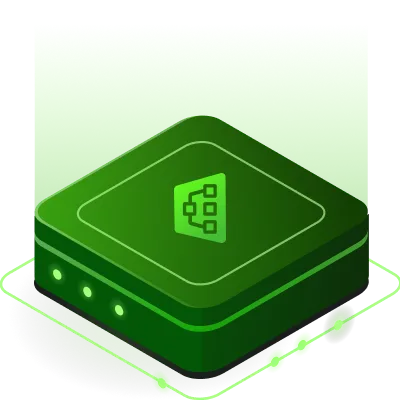What is Terraform? Everything You Need to Know


Key takeaway
Terraform is a cloud-agnostic Infrastructure as Code (IaC) tool that lets teams define, provision, and manage infrastructure using declarative code instead of manual setup. In this blog, you’ll learn what Terraform is, how it works, and when to use it. You’ll also explore its key components, use cases, and how it compares to other tools plus why OpenTofu has emerged as its open-source successor.
Terraform is one of the most popular tools in the modern DevOps toolkit. If you've ever wondered how large teams automate infrastructure provisioning or how you can deploy cloud environments using just code, you're in the right place.
This guide will walk through what Terraform is, how it works, when to use it, how it compares to other tools, and why OpenTofu is emerging as its open-source successor.
What is Terraform?
Terraform is an Infrastructure as Code (IaC) tool created by HashiCorp that allows you to define, provision, and manage your infrastructure using a declarative configuration language called HCL (HashiCorp Configuration Language).
With Terraform, you describe what your infrastructure should look like in .tf files, and Terraform figures out how to create and maintain that state for you whether it's on AWS, Azure, Google Cloud, on-premises, or across multiple providers.
What is Terraform Used For?
Terraform is used to:
- Provision infrastructure (compute, storage, network, etc.)
- Manage multi-cloud deployments
- Automate CI/CD infrastructure setup
- Standardize environment configurations across dev, test, and prod
- Track changes to infrastructure like version-controlled source code
- Build reproducible environments for disaster recovery or testing
What is Infrastructure as Code (IaC)?
Before Terraform, provisioning infrastructure involved manual clicks in cloud dashboards or hand-crafted shell scripts. IaC shifts this paradigm by enabling you to define infrastructure in code.
Benefits of IaC:
- Repeatability: Environments can be reliably reproduced
- Version control: Code can be tracked, reviewed, and rolled back
- Automation: Infrastructure becomes part of CI/CD pipelines
- Consistency: Reduces human error and configuration drift
How Does Terraform Work?
Terraform consists of two major components:
1. Terraform Core
- A CLI-based binary that evaluates your configuration files
- Manages execution plans, resource lifecycle, and state
2. Terraform Plugins
- Enable Terraform to talk to cloud providers or platforms
- Includes Providers (e.g., AWS, Azure) and Provisioners (e.g., local-exec)
Terraform Workflow:
- Write: Define infrastructure using HCL
- Init: Initialize working directory with terraform init
- Plan: Generate execution plan with terraform plan
- Apply: Create/update infrastructure with terraform apply
Key Components of Terraform
| Component | Description |
|---|---|
| Providers | Plugins to interface with cloud APIs (e.g., AWS, Azure, Kubernetes) |
| Resources | The infrastructure components you manage (e.g., VM, S3 bucket) |
| Modules | Reusable, composable collections of Terraform configs |
| Variables | Inputs for dynamic configuration and environment flexibility |
| State File | Records the actual infrastructure and metadata terraform.tfstate |
| Workspaces | Used to manage multiple environments (dev, prod, etc.) with shared code |
| Data Sources | Fetch info about existing resources outside Terraform control |
Basic Terraform Example
Terraform Use Cases
1. Spin Up and Tear Down Environments
Use Terraform to create temporary dev/test environments that mirror production, saving time and reducing manual setup errors.
2. Multi-Cloud Management
With one Terraform configuration, deploy infrastructure across AWS, GCP, and Azure avoiding vendor lock-in.
3. Complex Applications (N-tier)
Manage dependencies between backend databases, application servers, and frontend load balancers all in a single Terraform plan.
4. Kubernetes and PaaS Integration
Use Terraform to provision Kubernetes clusters and other platforms like Consul or Datadog through available providers.
Terraform Security Best Practices
- Avoid hardcoding secrets: Use Vault, AWS Secrets Manager, or encrypted remote state
- Secure state storage: Store state in S3, Azure Blob, or Terraform Cloud with versioning and encryption
- Static analysis: Integrate tools like tfsec, Checkov, or Terrascan
- Use Policy as Code: Enforce guardrails with OPA or Sentinel
- Audit everything: Enable logging and peer reviews for all changes
Terraform vs Other Tools
| Tool | Use Case | Limitations |
|---|---|---|
| CloudFormation | AWS-specific IaC | Locked to AWS |
| ARM Templates | Azure-specific | Verbose syntax |
| Chef / Puppet | Configuration management post-provisioning | Not ideal for provisioning |
| Kubernetes | Container orchestration | Needs infra underneath |
| Custom scripts | Quick & dirty | Hard to maintain at scale |
| Harness IaCM | Enterprise-grade IaC management | Newer ecosystem |
Terraform stands out for being:
- Cloud-agnostic
- Modular & reusable
- Declarative
Terraform's History and OpenTofu
Terraform launched in 2014 as an open-source project under MPL 2.0. In 2023, HashiCorp changed Terraform’s license to BSL 1.1, restricting certain commercial use.
In response, OpenTofu was born as a community-driven fork of Terraform under the Linux Foundation, maintaining MPL licensing.
Why Use OpenTofu Instead?
- Truly open-source and free to use in any context
- Maintained by a growing, diverse community
- Backed by contributors across the Terraform ecosystem
- Compatible with existing Terraform code and workflows
Summary: Why Use Terraform?
Terraform simplifies infrastructure management by turning manual tasks into declarative code. It works across cloud providers, promotes best practices in automation, and scales with your infrastructure needs.
Whether you're launching a side project or managing enterprise-scale cloud deployments, Terraform and increasingly, OpenTofu offer the flexibility, visibility, and power you need.
Learn More
- Terraform Registry
- OpenTofu Project
- How to Learn Infrastructure as Code
- Infrastructure as Code in DevOps
Want to Scale Terraform Securely?
If you're looking to scale Infrastructure as Code across teams with governance and control, request a demo to see it in action.

